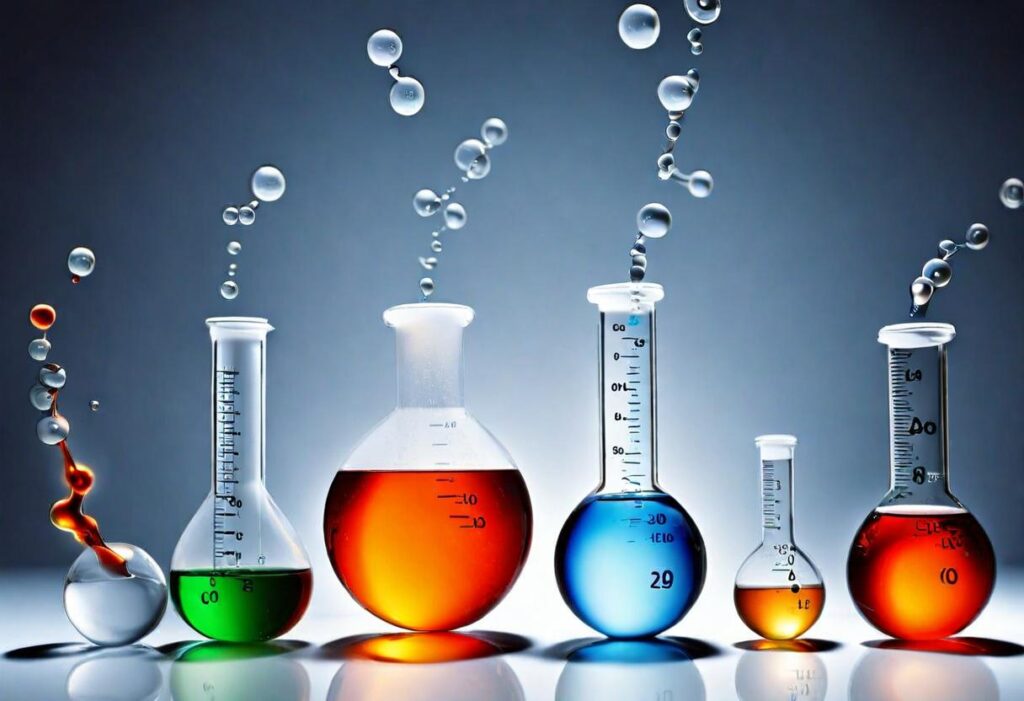Succeed in your Chemistry IGCSE tests by knowing the basic components of the Earth – the states of matter! This inclusive IGCSE solids liquids gases revision guide will in an elaborate and interesting manner explain the properties and dynamics of solids, liquids, and gases.

Everything you see and touch, from the chair you’re sitting on to the air you breathe, can be classified based on its state of matter. The three predominant states are:
Solids:
Liquids:
Gases:
Understanding these properties is crucial for grasping various chemical and physical changes tested in IGCSE Chemistry.
There are specific circumstances or conditions under which matter changes from one state to another or transforms into a different form. Here are some of the basic or fundamental phase changes to remember.
The knowledge of the basic principles of the states of matter puts you in a good position to pass your IGCSE exams with ease. Regarded as the secrets of success, regular practice, the appreciating of the “why” and the use of effective visualization will be in the forefront! Alternatively, an expert IGCSE Chemistry online tutor can also be considered.
Solids, themselves, are hard and have fixed positions of particles within them which are not proceeded by free movement. These particles are so close to each other that they cannot be density compressed or expanded.
Liquids have a definite volume but can change their shape to occupy the space of whichever container they are poured into. The particles within these liquids are relatively close to each other and can move, this is the main reason why liquids are able to flow.
One important key characteristic of gases is that They do not possess a definite shape or volume. They do have particles that are far apart from each other and that are in constant motion.
In my opinion, the four examples of phase change are: melting (solid to liquid), (liquid to solid) freezing, evaporation (liquid to gas), and condensation (gas to liquid). These processes are always associated with the change in energy and arrangement of the particles.
The majority of particles in solids are fixed in a certain pattern and bonded closely, in liquids, particles are loosely held and adjacent, and in gases, particles are far apart.
Try to visualize various structures of matter and particles in interactions by means of diagrams, and revise task questions on phase transitions. In order to augment the important principles, it will be required to comprehend the characteristics of particles and their transformations between states.
When learning about the compressibility of liquids and that of gases, students often get confused or even make the mistake of being unable to differentiate the pattern of particle arrangement in liquids against that of gases. Furthermore, phase changes are one of the most difficult entities to retain without knowledge of the actions taking place at the particle level.
Concepts of the states of matter have to be mastered. Regular study, being involved during lessons and asking questions will help.
(a) Describe the arrangement and movement of particles in each state of matter (solids, liquids, and gases). (b) Explain why a solid has a definite shape, while a liquid takes the shape of its container.
Solution:
(a) Solids: Particles are tightly packed in a fixed, ordered arrangement with minimal movement.
Liquids: Particles are closer together than in gases but have a more random arrangement and some movement.
Gases: Particles are far apart with constant, random movement.
(b) Solids have a fixed shape because the particles are locked in their positions. Liquids have weaker forces between particles, allowing them to flow and take the shape of their container.
List two physical properties that differentiate solids from liquids.
Solution:
Definite shape: Solids have a fixed shape, while liquids take the shape of their container.
Compressibility: Solids are difficult to compress, while liquids are somewhat compressible.
The diagram (Mentioned in IGCSE Question Paper) shows the arrangement of particles in three different states of matter (A, B, and C). Identify which state each represents (solid, liquid, or gas) and explain your reasoning.
A – Solid: The particles are very close together and arranged in a definite order, indicating a solid state.
B – Liquid: The particles are closer together than gas but have a more disordered arrangement compared to A, suggesting a liquid state.
C – Gas: The particles are very spread out with a lot of space between them and show random movement, characteristic of a gas.
Chemistrybench’s IGCSE solids liquids gases tutoring services offer personalized, 1:1 support designed to meet the unique needs of each student. Our expert tutors create customized lesson plans that focus on areas where students need the most help, ensuring targeted and efficient learning. This personalized approach helps students grasp complex concepts in subjects like IGCSE Chemistry, IGCSE Maths, and more, leading to a deeper understanding and better exam performance.
One of the key benefits of our tutoring services is flexibility. Students can schedule sessions at their convenience, making it easier to balance studies with other commitments. Our online platform allows access to top-quality tutoring from the comfort of home, providing a convenient and effective way to learn.
Additionally, our tutors are experienced in the IGCSE curriculum and use proven teaching methods to build confidence and improve grades. By focusing on the individual needs of each student, our IGCSE online tutoring services help students achieve their academic goals and excel in their IGCSE exams. Whether you need help with specific topics or overall exam preparation, Chemistrybench is here to support your success.
Chemistry Bench is an online chemistry tutoring platform that provides tutoring for various chemistry courses and curricula on the national and international levels.
Subscribe now to receive our latest updates, Courses, and Exam Tips.
